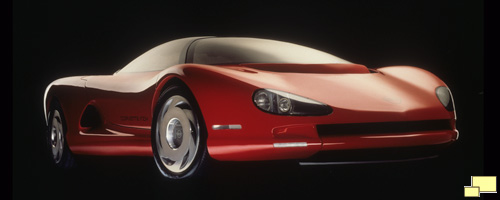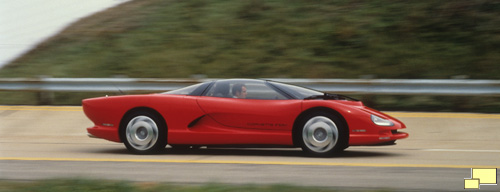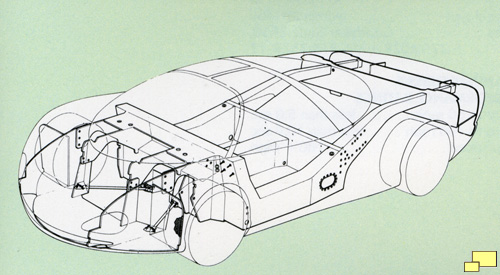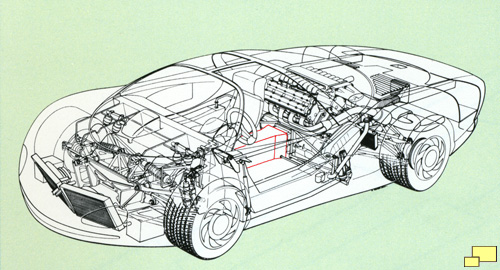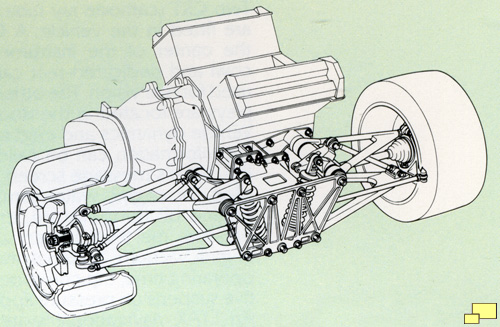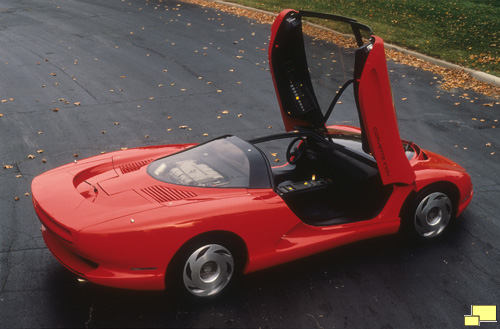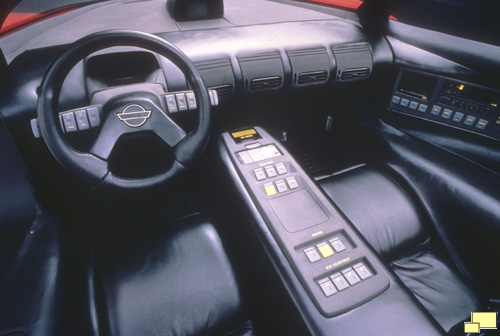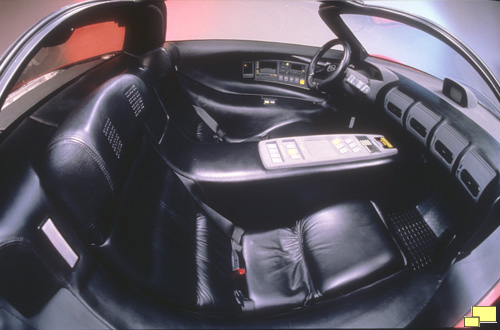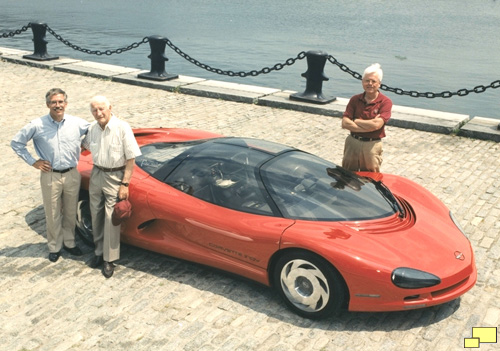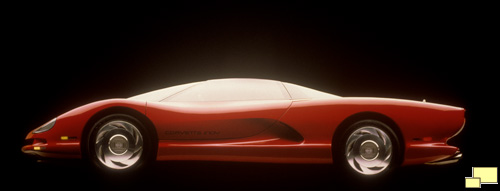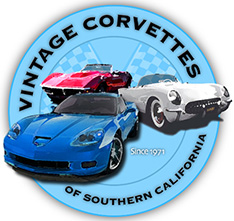
|

|
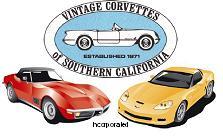
|
Return to Vintage Corvettes Home Page
Return to Vintage Corvettes Features Page
Publisher, The Corvette Story
Corvette Indy
When the C8 Z06 was unveiled at the Petersen Museum in Los Angeles on October 26, 2021, the news was shouted from the rooftops. A big step in Corvette performance was achieved via a four cam, 16 valve aluminum engine in a mid engine package.
While nobody can debate the significance of the event, the exotic engine and the mid engine configuration was not the first to appear in a Corvette, although it was the first to see production.
In the early 1980's GM created the Corvette Indy. It is a mid-engine concept vehicle intended as a running vision into the future of world class sports cars. Unlike many concept cars, the Corvette Indy is a fully functional car.
Two views of the Corvette Indy: Above is the composite structure and below you'll see it's layout.
The Corvette Indy is built on a rectangular carbon fiber backbone as seen above in red. This is the same method utilized by automotive designer Colin Chapman of Lotus cars fame. The filament-wound beam connects the front suspension to the rear drivetrain and suspension package, making it a stressed member of the chassis which was formula one technology at the time. The beam weighs under 45 pounds; the same steel equivalent would weigh almost 111 pounds. Additionally it is stronger than steel as it can sustain nearly 166,000 pounds per square inch of stress; the steel equivalent would break at the 35,800 pounds per square inch point.
The Indy Corvette transverse mounted engine and transmission. Going with transverse mounting has packaging advantages but the C8 Corvette went with a longitudinal configuration. Note that the drivetrain also functioned as a stressed member of the chassis; this was also standard practice in formula one cars at the time.
The marketing brochure for the Corvette Indy promised active suspension but the technical drawing above clearly shows conventional inboard springs and shock absorbers.
The engine was an experimental 350 cubic inch aluminum mill and was code named 350/32 with the "32" describing the total number of valves. The alloy cylinder heads sported a dual overhead camshaft design (a total of four cams) and a displacement of 5,727 cc. This, including the bore / stroke of 3.90 inches x 3.66 inches is exactly the same as the LT5 in the ZR-1 introduced in 1990. Wether this is a coincidence or if the two engines are direct cousins of each other is not known. 16 Rochester Multec fuel injectors are positioned in the manifold near the intake valves and are triggered sequentially. It is rated at 380 horsepower @ 6,000 RPM with torque of 370 lb-ft @ 3,800 RPM.
The Corvette Indy also featured All Wheel Drive. Power is delivered to the front through an intermediate differential and then to a third differential located between the front wheels. Speed differences between the front and rear wheels are minimized through a viscous coupling in the transmission splitter. It is set up so that 35% of the engine torque goes to the front wheels and 65% to the rear wheels.
How to describe the Corvette Indy's door? For starters, it has to be singular as in "door", not "doors". Maybe "Singular Scissor Door with Integral Roof?". Whatever it's known as, the concept would not work on rainy days. That's one of the many reasons concept cars look amazing but are never found in your local Chevrolet showroom.
Note the visible engine under the rear window, a good idea that found it's way into the C8 Corvette coupe.
Corvette Indy interior was a typical '80s affair with plentiful leather and a clean simple layout.
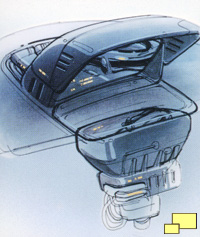
Note that it uses a CRT (Cathode Ray Tube) positioned in front of a mirror, the display technology of the 80s. While I have not seen the Corvette Indy system in action, I cannot imagine it is of much use. Although it was also a packaging nightmare and prohibitively expensive, the concept was solid and is commonly found in current cars. The difference is the available display technology.
Corvette Royalty poses with the Corvette Indy: Dave Hill, Zora Arkus-Duntov and Dave McClellan
Click on any image to view a larger image
